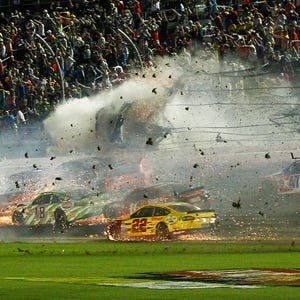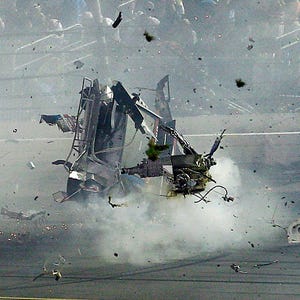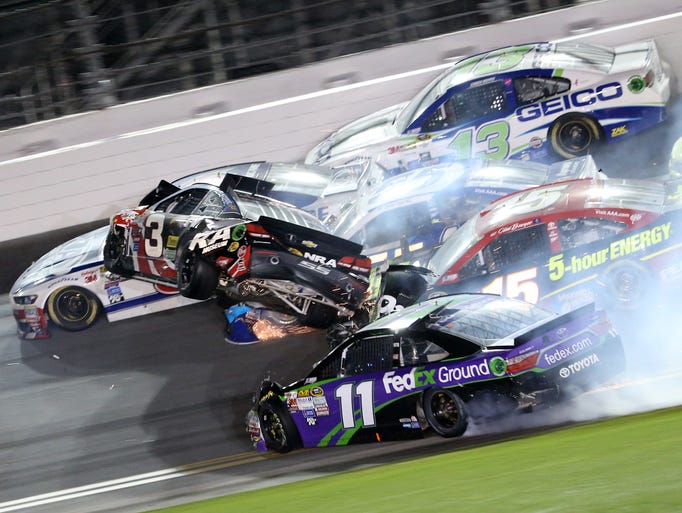James: Is plate racing worth risk anymore for NASCAR, drivers? – USA TODAY
DAYTONA BEACH, Fla. — There are layers to peel back from the complicated wad that is the checkered-flag crash in the Coke Zero 400 on Monday morning.
Did a mangled and torn catchfence that allowed injuries to five fans actually work since it kept Austin Dillon’s 3,250-pound Sprint Cup car from careening through a section of the grandstands?
Mostly yes.
Does the fact that Dillon’s No. 3 Chevrolet looked like a space capsule dropped from the exosphere count as a success of safety innovations hastened since 2001 because a driver walked away again?
Certainly yes.
But from here, things get complicated.
Simply, and most importantly, there is a question for NASCAR, as a sanctioning body and a sport: Is this acceptable?
Drivers, most pointedly Ryan Newman on Monday, but with thoughtful reflection of many peers, have questioned the sense of this bizarre form of motorsport.
Science intertwines with diplomacy and the requirement of an obscene lack of control that must pass as bravery to create modern restrictor plate racing, where drivers race inches apart for hours at 200 mph, forming alliances they all know are worthless in their eventual late-lap grab for trophies.
Amid this natural racing mentality, the technology to send stock cars around the 2.5-mile vastness of Daytona and the 2.66-mile length of its sister track in Talladega, Ala., is outdistancing the ability to mitigate the mayhem that could injure or kill a driver or fan.
Certainly, safety improvements since the death of seven-time Sprint Cup champion Dale Earnhardt on the final lap of the 2001 Daytona 500 have saved countless driver lives. But even with myriads of aerodynamics changes, rules tweaks and adjustments, cars keep going airborne, metal keeps shredding and crews keep rushing to wreckage to learn if this time human tolerance had been pushed beyond the punishment-absorbing stubbornness of better roll cages, neck braces and impact-absorbing walls.
But, hey, once those thumbs go up to the fretful crowd … That was one helluva, show, huh?
PHOTOS: AUSTIN DILLON’S TERRIFYING CRASH
There will be declarations anew that drivers uncomfortable with this parlay should find other work. Fair enough. That’s always the case. But that’s always been the type of thinking that coerces concessions on unacceptable conditions. There will always be another driver to step up, and that’s part of the problem.
Drivers have a stake in this, too, and now, presumably, in a series built on the “independent contractor” relationship, they have a voice.
If the last lap of the Coke Zero 400 doesn’t dominate several conference calls between the newly formed driver council and NASCAR before the series races at Talladega in October, then drivers have failed themselves and resigned their own mortality to whether the science or fate or whatever they pray to when they race at a restrictor-plate track fails them next time.
The question is the same for them, too: is this acceptable?
Drivers like Newman have already said it is not, telling USA TODAY Sports: “NASCAR got what they wanted. That’s the end of it. Cars getting airborne, unsafe drivers, same old stuff. They just don’t listen.”
And if that’s the case, that’s unacceptable.
Follow James on Twitter @brantjames
WATCH: NASCAR Chairman talks safety after Dillon’s crash







